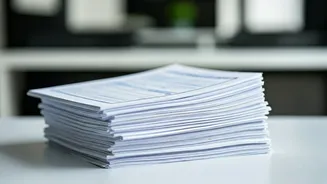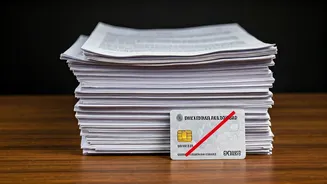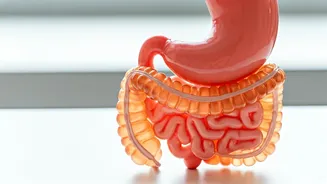Eligibility Essentials Outlined
To begin, it's essential to understand who qualifies for an Aadhaar card. Aadhaar cards are issued to Indian residents. For minors, specifically children
below the age of 18, the process has specific requirements. Parents or legal guardians must initiate the application. The minor's presence isn't always mandatory during the enrollment process, particularly for very young children. However, a parent or guardian must provide consent and relevant documentation on their behalf. The child's information is linked to the parent's or guardian's Aadhaar card initially, which is updated when the child reaches adulthood. This system ensures that all Indian residents, including minors, have access to this vital form of identification.
Required Documents Checklist
Gathering the necessary documents is a crucial part of the Aadhaar application. Parents or guardians need to provide their own Aadhaar card as proof of identity and address. A birth certificate is the primary document required to verify the minor's identity and date of birth. Other accepted documents include school ID cards, passport, and ration cards. If the child does not have a birth certificate, alternative documents such as a hospital discharge slip or an Anganwadi record can be accepted. Address proof documents, like utility bills or rental agreements, should also be provided, reflecting the address where the child resides with the parent or guardian. Make sure to have photocopies and the originals of all documents for verification.
Initiating The Application
The application process can start at any Aadhaar enrollment center. You can locate these centers by searching online or visiting the UIDAI (Unique Identification Authority of India) website. Visit the enrollment center with all the necessary documents. At the center, a representative will assist in the application. Typically, the process involves filling out an enrollment form. The minor's biometrics, such as fingerprints and iris scans, are captured if the child is above a certain age (usually five years old). For younger children, only demographic information and a photograph are taken. Ensure all provided information is accurate to avoid future discrepancies. After submission, you will receive an acknowledgment slip, which contains an enrollment ID. This ID is essential for tracking the status of the Aadhaar card.
Biometric Data and Updates
As previously mentioned, children below a certain age are usually not required to provide biometric data. When the child reaches a certain age, they will have to update their biometrics. When the minor turns 15, they are required to update their biometrics. This is done at an Aadhaar enrollment center. This step ensures that the Aadhaar data accurately reflects the individual's current identity. Parents or guardians will need to accompany the child to the center for this update. At the time of the update, the child's fingerprints, iris scans, and photograph will be captured. This is a crucial step to maintain the integrity and functionality of the Aadhaar card throughout the minor's life. Keep the acknowledgment slip from the update, as it may be needed for future verification.
Checking Aadhaar Status
After submitting the application, you can check the status online. Use the Enrollment ID provided on the acknowledgment slip to track the progress on the UIDAI website. You can also track the status via SMS. Once the Aadhaar card is generated, it can be downloaded from the UIDAI website or received via post. Regularly checking the status keeps you informed about any potential delays or issues with the application. If the status is pending, it indicates that the card is still being processed. Any discrepancies in the submitted information can cause delays. In case of issues, contact the UIDAI helpline or visit the enrollment center for assistance.
Post-Application Essentials
After obtaining the Aadhaar card, it's essential to keep it safe. Store the card securely, and provide copies only when required for official purposes. Remember to link the Aadhaar card with other important documents like the child's school records and bank accounts. Aadhaar is crucial for accessing various government schemes and services, ensuring the child can benefit from them. If there are any changes in the child's information, such as address or contact details, make sure to update the Aadhaar card accordingly. Keep the contact information updated to receive important notifications and updates related to the Aadhaar card. Regularly check for any updates or changes from the UIDAI to stay informed about its usage and functionalities.














